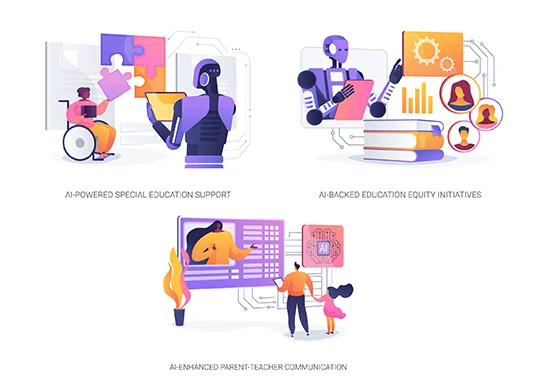Advocating for a Human-Centered Approach to AI Integration in Education
Updated: February 7, 2025

Recently we celebrated World Education Day and much of the reflection that took place across think tanks, research hubs, and educational institutions was focused on Generative Artificial Intelligence and what its implications are for educational practice. With the rapid advancement and integration of AI tools in various sectors, including education, it becomes crucial to prioritize a human-centered approach to ensure that technology serves to enhance, rather than replace, essential human skills and qualities.
The idea of a human-centered approach, of nurturing and celebrating human intelligence as opposed to artificial intelligence is a popular one. What exactly does this mean? What is it that humans can do that algorithms and Large Language Models cannot do? I would venture into these three core areas which should continue to form the basis of quality education and how we get every child to such heights of learning as part of United Nations’ Sustainable Development Goal 4:
Empathy
Our emotions and ability to feel the affective state of other people and animals is something that makes us distinctly mammalian and not synthetic or android. One of the most powerful ways of building empathy through education is storytelling, particularly in the form of live testimonies of guest speakers, participants who share experiences they’ve been through, and artistic expressions of such experiences as communicated through fiction, music, theatre, and visual arts (to give just some examples). A pedagogy of empathy puts the emotions centerfold and brings out learning through storytelling.
Criticality
Critical thinking means screening information for biases and recognizing fallacies, overgeneralizations, and misinformation. It takes a skeptical and discerning eye to see this, and it takes a good education to habituate the mind to take on the necessary habits to escape lazy thinking and self-centered confirmation bias. A certain level of subject expertise and knowledge is needed for effective critical thinking, which is why mastery learning remains centrally important in education, particularly in cultural, scientific, and historical domains. For example, learners can be taught to evaluate the source and credibility of information, identify logical fallacies in arguments, and distinguish between facts and opinions, especially when dealing with AI-generated content.
Well-Being
As learning spaces are more and more dominated by screens, we need to compensate for this by ensuring those precious moments of face-to-face interaction, screenless discussions, and reflection. Organic experiences such as viewing a work of art in the flesh in a museum instead of through a screen, or attending a live concert instead of listening to music through headphones are emphasized. Furthermore, equipping learners with strategies to seek inner peace and resilience through health literacy, spiritual meditation, and intrapersonal awareness is key.
All of this should happen with and not against GenAI. Using technology to enhance learning in creative, critical, and ethical ways is a good thing, but it does mean that we need to pay attention to the other side of the equation for balance and, ultimately, holistic learning. There should be a strong emphasis on fostering digital well-being and responsible technology use, especially for those earning their degrees online.
